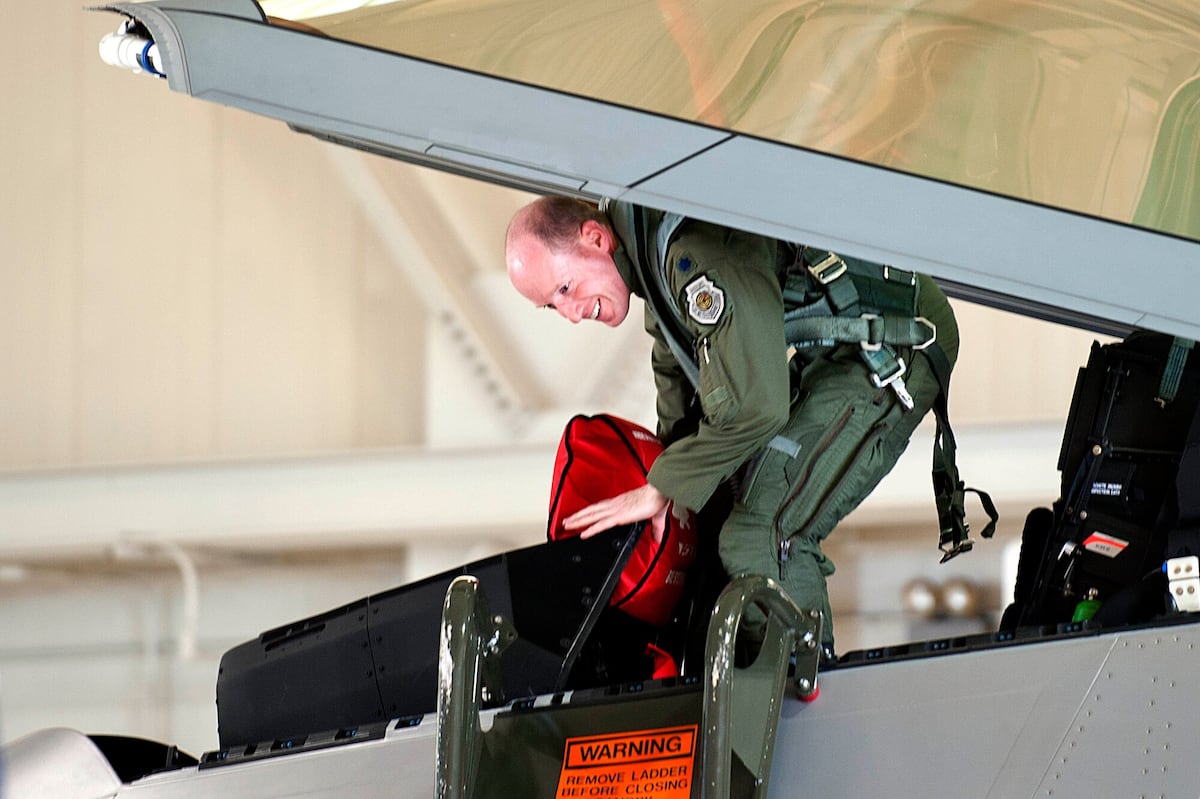The U.S. must double its sub production, CNO nominee says. “We need a transformational improvement and the ability to deliver twice the capacity that we’re currently delivering” in order to meet the needs of the U.S. Navy and the country’s commitments to the UK and Australia under the AUKUS pact, Adm. Daryl Caudle, the U.S. Fleet Forces Command leader who is nominated to be the chief of naval operations, told senators Thursday during his confirmation hearing.
“We need to transformationally improve the output of the two yards that are producing our Virginia-class submarines. There needs to be some creativity, some ingenuity, some outsourcing improvements; stop the [employee] attrition levels that are currently there today, at those two yards,” Caudle said. “We need an all-hands-on-deck approach to this, to get to the 2.3 submarines per year.”
Context: The Navy’s nuclear submarine programs have been over budget and behind schedule, fueled by supply chain challenges and a dwindling workforce. Those problems affect building new ships and repairing and maintaining older ones.
Caudle says he might “walk away” from long-under-repair attack dub. Asked about the USS Boise, which has been under repair since the 2010s, the CNO nominee said: “We walked away from our private yards’ capacity to do in-service repair decades ago. And as a relief valve to an oversubscribed public yard, we decided to induct three ships into Huntington Ingalls. And a couple, in the last several years, into Electric Boat. Because of their, the lack of investment in those areas—because we did walk away from that—I think both of those yards had some learning to do before they were able to get up on the step. And that learning has not been quick, and it’s not been effective. And without a clear demand signal of what unit’s coming after Boise, I worry that that effort won’t be applied to Boise to get her completed. So working with the Secretary of the Navy, I want to take that on if I’m confirmed, and look at that hard.” Defense One’s Lauren C. Williams reports from the hearing, here.
TD Cowen analysts: “It is important to make one big observation upfront – Caudle is a submariner, so he is incredibly well versed in submarine design, operations, tactics, and requirements…Over the last several months, Navy officials have also broached the idea of splitting up the current teaming arrangement on Virginia between General Dynamics and Huntington Ingalls.” Read more (registration required).
Meet the ‘cobots’ that could lower the cost of building submarines. Williams also made a rare visit to the General Dynamics Electric Boat sub-building yard in Rhode Island last week, and discovered that “cobots”—short for collaborative robots—are being used to cut and weld steel. No photos, thanks to security restrictions, but you can read about those, here.
Additional reading:
Welcome to this Friday edition of The D Brief, a newsletter dedicated to developments affecting the future of U.S. national security, brought to you by Ben Watson, Bradley Peniston, and Jennifer Hlad. Share your tips and feedback here. And if you’re not already subscribed, you can do that here. On this day in 1946, the U.S. military first tested a nuclear weapon underwater, which led to a more cautious approach toward the effects of radioactive fallout from nuclear weapons.
Around the Defense Department
Militarized-border SITREP: About 7,600 U.S. military personnel are deployed to the U.S.-Mexico border, the Associated Press reported Friday from Nogales, Ariz.
“The military mission is guided from a new command center at a remote Army intelligence training base alongside southern Arizona’s Huachuca Mountains,” AP’s Morgan Lee writes. “There, a community hall has been transformed into a bustling war room of battalion commanders and staff with digital maps pinpointing military camps and movements along the nearly 2,000-mile border.”
The commander in charge boasted about how long his troops can work alongside Border Patrol agents, telling AP, “We don’t have a union, there’s no limit on how many hours we can work in a day, how many shifts we can man,” said Army Maj. Gen. Scott Naumann. “I can put soldiers out whenever we need to in order to get after the problem and we can put them out for days at a time, we can fly people into incredibly remote areas now that we see the cartels shifting.”
Said one 24-year-old Army sergeant: “Deterrence is actually boring.”
In addition to those 7,000-plus troops, Naumann also has 117 armored Stryker vehicles, more than 35 helicopters and a half-dozen long-distance drones, AP reports.
Notable: “In some cases those deployed are immigrants themselves,” AP’s Jae C. Hong reports in a separate photo spread featuring more than a dozen images taken this week from the U.S.-Mexico border.
By the way: The Pentagon shifted $200 million intended for Marine Corps barracks and military-run schools to pay for 20 miles of a border wall, Task and Purpose reported Friday, citing a letter sent to lawmakers in late May.
The repurposing takes away about “$21 million Defense Health Agency funds for the Oak Harbor, Washington Ambulatory Care Center and Dental clinic,” as well as “$15 million in Department of Defense Education Activity funds to replace Robinson Barracks Elementary School in Stuttgart, Germany,” and more than “$5.4 million in Navy funds for Marine Corps barracks at Kadena Air Base, Japan,” T&P’s Patty Nieberg writes.
New: U.S. deportation flights have begun removing people held at Florida’s state-run migrant detention facility in the Everglades where National Guard troops have been ordered to conduct security, the New York Times reported Friday after public remarks from Gov. Ron DeSantis. He did not say how many people had been flown out of the detention center, nor where they were sent.
Worth noting: “[I]mmigration lawyers say they have not had adequate access to clients being held there,” which prompted the American Civil Liberties Union to sue “last week over detainees’ lack of access to legal counsel and violations of due process,” the Times reports. More, here.
Additional reading:
Update: The U.S. Army’s ‘Innovation Corps’ tech execs are in training, but don’t have assignments yet, Defense One’s Meghann Myers reported Thursday.
The first round of detachment members include Shyam Shankar, Palantir’s chief technology officer; Andrew Bosworth, Meta’s CTO; Kevin Weil, OpenAI’s chief product officer; and Bob McGrew, an advisor at Thinking Machines Lab and OpenAI’s former chief research officer. They’ve joined the Army as Individual Mobilization Augmentees, which means they go through a four-week training and they go active one weekend a month, but they don’t report to a specific unit on a local post like other reservists.
In case you’re curious, IMAs are required to adhere to Army height-weight standards, pass a physical fitness exam, and complete required annual training. Read on, here.
The Australian army fired a U.S.-made, long-range missile from an Australian-owned HIMARS launcher during exercise Talisman Sabre. The test was the first time the Precision Strike Missile—aka “PrSM,” from Lockheed Martin—was fired in Australia, officials said.
U.S. Army Secretary Dan Driscoll and Army Chief Gen. Randy George observed the strike during a tour through the Indo-Pacific. “The best way to be strong is when our friends and our allies are strong,” Driscoll said at a media event in Australia following the test. “The production of the PrSM missile and the partnership with the Australians, and the training that went into this event is a model for us as Americans on how we can project and partner with our allies to project strength around the world,” said Driscoll.
Intended as a replacement for the Army Tactical Missile System, the PrSM has a range of about 300 miles and can strike moving targets on land or at sea. A HIMARS launcher can shoot two of the missiles at a time. The U.S. Army’s Hawaii-based 25th Infantry Division recently received the first of 16 HIMARS.
“We are actively designing our Army so that we are capable of responding to any threat from China,” Driscoll said in Australia. “If you look at how warfare has unfolded throughout human history, most humans have gotten guesses wrong about where war will happen; so we are very cognizant that we [have] a United States Army that is flexible, and agile, and innovative.”
A new joint task force will help active-duty troops and their families with problems they experience while moving from base to base, Defense One’s Patrick Tucker reported Thursday. That news comes after a multibillion-dollar contract aimed at streamlining and centralizing the military relocation process was terminated in June amid an avalanche of complaints.
“The biggest [issue] was missed pickups—service members reporting that they were told one thing and something else occurred,” a defense official said. To address the fallout, the Pentagon’s permanent change of station joint task force has surged personnel to coordinate remaining moves and assist families during the transition. A call center number is expected to be announced later this month. More, here.
And in industry news: A new control system will require fewer Patriot missiles to down incoming threats, conserving interceptors as stocks dwindle, a Northrop Grumman official told Defense One’s Audrey Decker, reporting Thursday from England’s Royal Air Force Station Fairford.
What’s going on: Grumman is equipping the Army’s air-defense battalions with its Integrated Battle Command System, or IBCS, which aims to stitch together sensors and weapons to give commanders a clearer picture of the battlespace. IBCS-equipped batteries will be able to do the job with many fewer PAC-3s, said Kenn Todorov, Northrop’s vice president of Command & Control and Weapons Integration.
After years of delays for the program, the Army has reached an initial operating capability with IBCS and is accelerating deployment to its Patriot-equipped battalions in Europe and the Indo-Pacific, said Kenn Todorov, Northrop’s vice president of Command & Control and Weapons Integration. It’s being deployed to training battalions “today,” and will be operational “in short order,” he said, but declined to give a specific timeline. Continue reading, here.
Additional reading:
Read the full article here








Leave a Reply